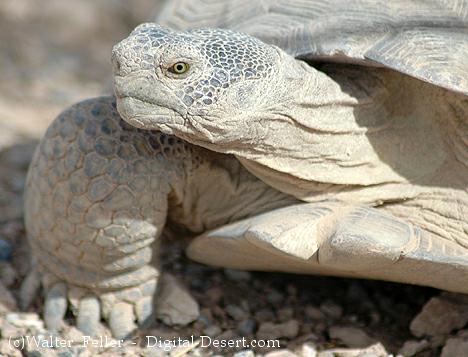Ecology of Hoover Dam
Endangered Wildlife
Small changes created by man can disrupt the delicate balance of nature in the desert. The tortoise, bonytail chub, and razorback sucker are examples of life endangered by man's intrusion in the environment.
Desert tortoises are easily recognized by their thick, elephant- like legs. Their front legs are larger than their rear legs in order to dig burrows. This is an important activity in the life of a tortoise because burrows protect them on hot summer days. They also hibernate in these burrows during the winter.
 The desert tortoise is a herbivore, meaning it eats only
plants, such as grasses, blossoms, and cactus. It can be found grazing in the
mornings and late afternoons to avoid the heat of the summer sun. Desert
tortoises can live to be 100 years old. Female tortoises normally lay four to
six eggs during the month of June. The eggs are deposited in a shallow hole and
covered with dirt. The eggs take several months to hatch.
(Tortoise photos)
The desert tortoise is a herbivore, meaning it eats only
plants, such as grasses, blossoms, and cactus. It can be found grazing in the
mornings and late afternoons to avoid the heat of the summer sun. Desert
tortoises can live to be 100 years old. Female tortoises normally lay four to
six eggs during the month of June. The eggs are deposited in a shallow hole and
covered with dirt. The eggs take several months to hatch.
(Tortoise photos)
Bonytail chubs and razorback suckers are endangered species which should be reported to National Park Service, U.S. Fish & Wildlife Service or Nevada Division of Wildlife, and thrown back into the water if caught.
Previous - Next
Desert Tortoise
-
Gopherus agassizii, is one of four species that have remained virtually unchanged since the Oligocene Epoch ...
-
An endangered species is a plant or animal in danger of becoming extinct throughout ...